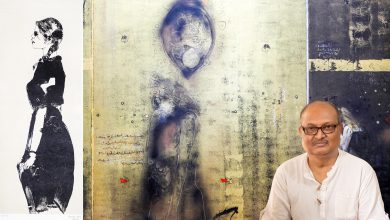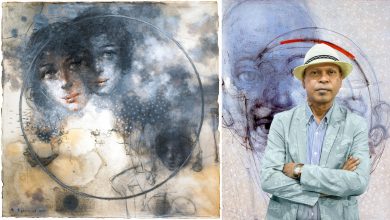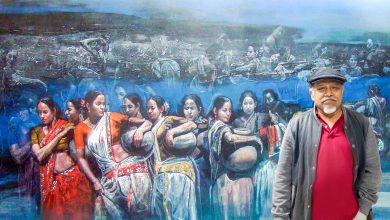“My interactions with art began before I could even write–there is a longing in me to continue to create until time ends.” Visual artist Sourav Chowdhury’s everyday life is dipped with colour as the artistic director for Gallery Cosmos and Cosmos Atelier 71 Studio. The artist recently held his 5th solo exhibition at La Galerie Alliance Française De Dhaka.
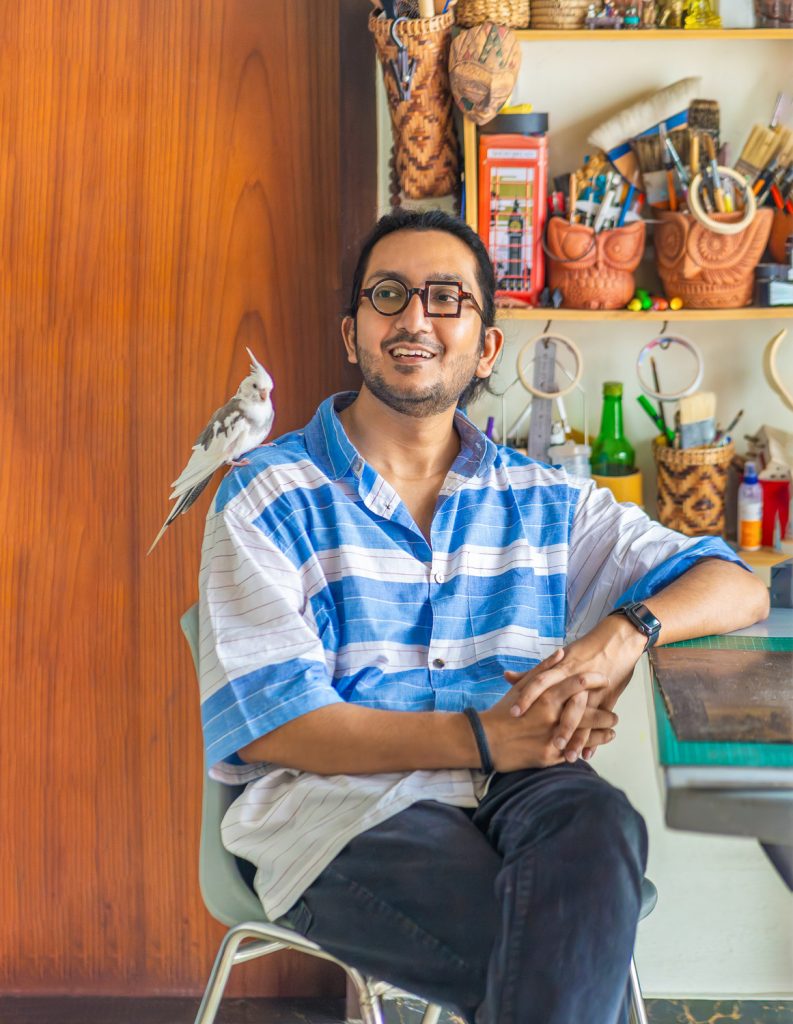
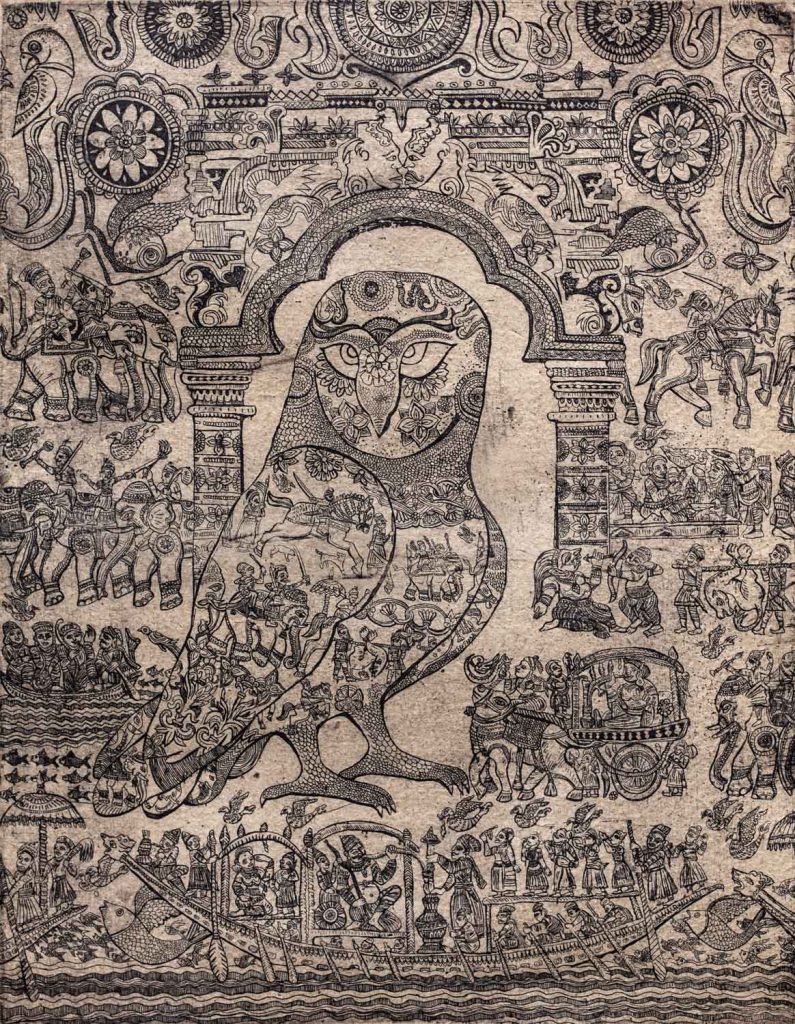
Returning to the mould that shaped his journey, Sourav Chowdhury notes, “My mother, father, in fact, my entire family were supportive of my interests. Especially my father, a doctor but there were many occasions when he created art, for me, to show me. I was inspired immensely by him. Then began my art competitions, then my admission into Charukola and after graduating I’ve continued to still be immersed in art years later.” Chowdhury’s first Solo Art Exhibition was also held at Alliance Française De Dhaka back in 2016. The following two Solo Art Exhibitions were held in Russia, in Moscow and Cherepovets. The artist also held a solo exhibition at the Russian embassy after his return to Bangladesh. His series “External Existence” has been ongoing for nearly 13 years. Expanding on his motivations behind this series, the artistic director states, “When I was nearing my graduation, like most artists, I too wanted to focus on developing my own art style. I began isolating my areas of interest based on this need. That’s when I released the pull I’ve always had towards our folk motives, our traditions. I’m also quite fond of stories written in our histories, the stories brewed in imaginations that have marked our childhoods. I’ve long wanted to turn back time to step into that world, to visit those places resting in history, if only I had a time machine. But I don’t have a time machine so I make do with my desires through my work. I journey through time through my art.”
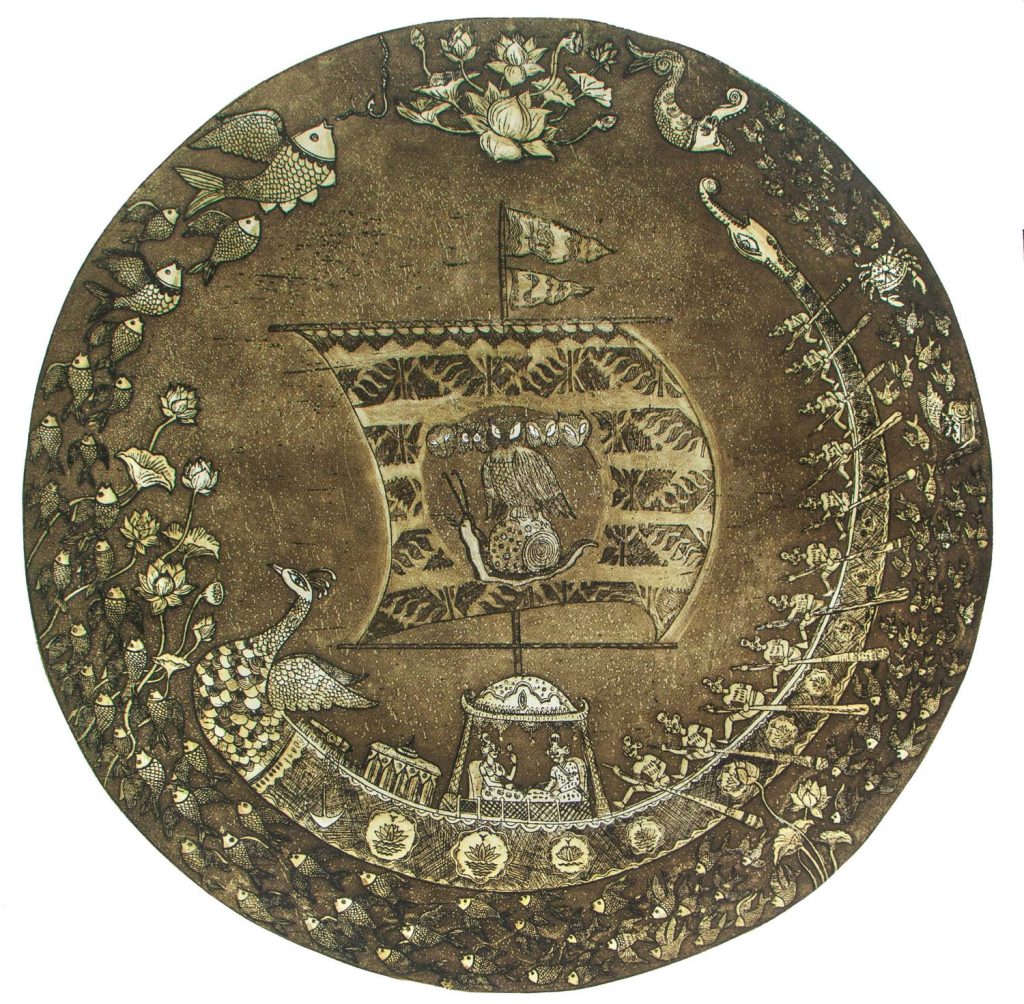
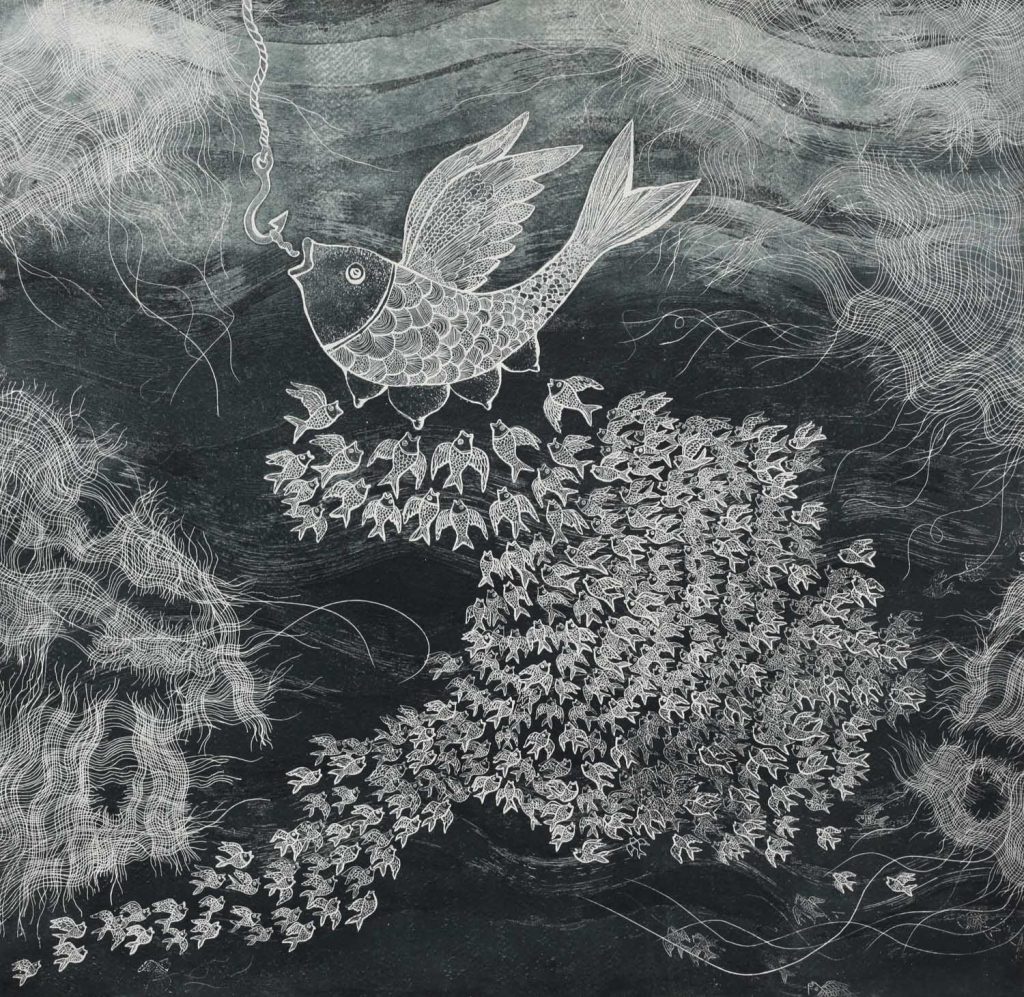
Journeying through various cultures at various times of history, the artist creates an amalgamation between these elements to form a language of art unique to him.
“I sometimes step into the history of Egypt. I sometimes create a mixture of the Egyptian style of hieroglyphics and interpret their stories in the form of our own traditional folk motifs and proverbs. Sometimes in a humorous manner. At times I go to the age of Mughals and carry our folk motifs and animals back with me. Some days I visit Mesopotamia, or to the time when people lived in caves. I have travelled thousands of years and I hope to travel a thousand more with this series of mine,” says a nostalgia driven Sourav Chowdhury. Brought up in a very cultural atmosphere, the artist draws a lot of inspiration from himself. Devoted to nature and animals, his works showcase a number of these elements scattered throughout. Chowdhury states, “Although we live in a city with limited spaces, I believe that we all could nurture a bit of greenery. I have tried to create my own small garden. There are a lot of animals, dogs and cats that reside on the street where I live. I try to feed them as best I can. I believe that we all can make a difference, bit by bit.”
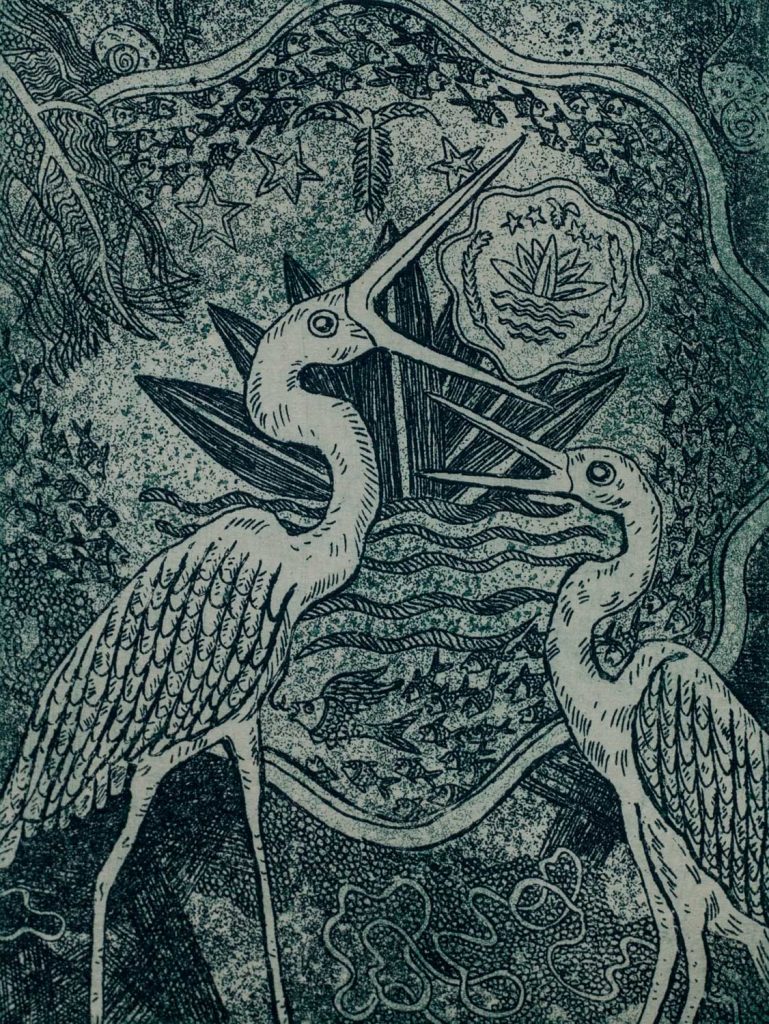
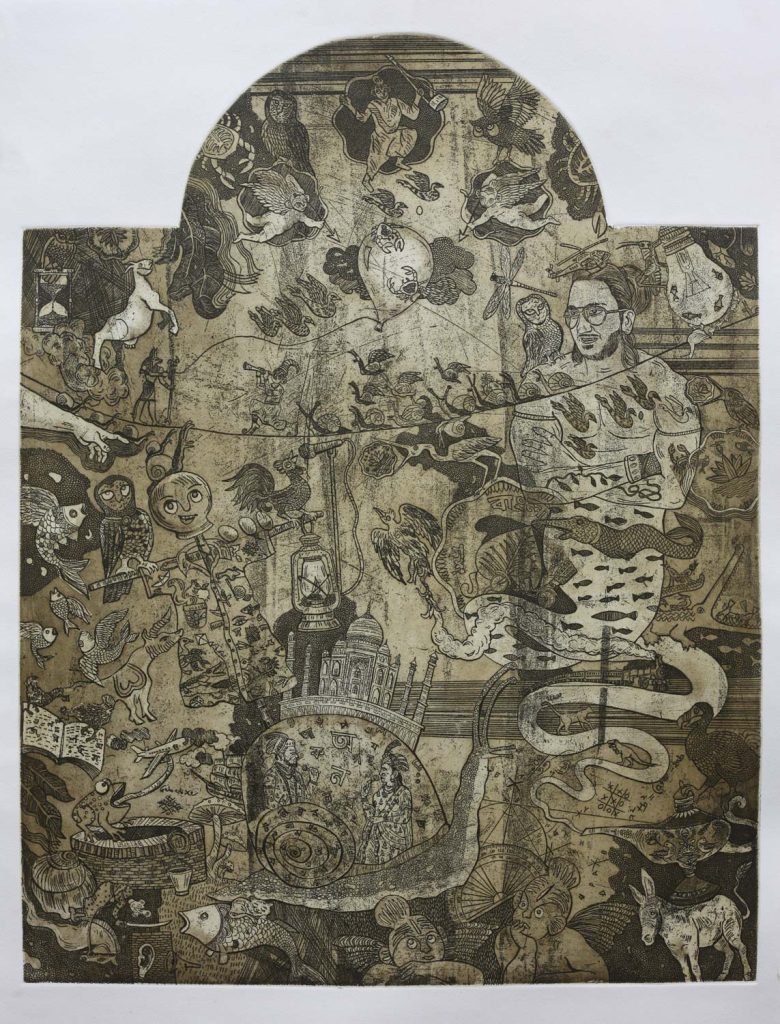
Expressing his adoration of the “the artists before me”, he states,” I’m quite inspired by the artists before me, the ones who are with us and the ones who are not. I try my best to spend time with these artists and to listen to their stories. They’ve struggled quite a bit to get the resources that are now easily available to us. I was lucky enough to be around Kalidas Karmakar during his lifetime. The energy that he had was quite extraordinary. He was more than twice my age but his energy was on a different level than us. It pushed me, if this individual at this age can work at this pace, what is stopping me?” Holding dearly onto his need to create, Sourav Chowdhury sketches something or the other on a daily basis, he notes, “I love to sketch, I try to do so everyday. There is a sketchbook on my bedside table and on my desk. I need to draw something everyday. The days I am unable to do so, it feels as though something has gone missing. There are some elements that come through in these small sketches that often come through when I sit down with bigger works.”
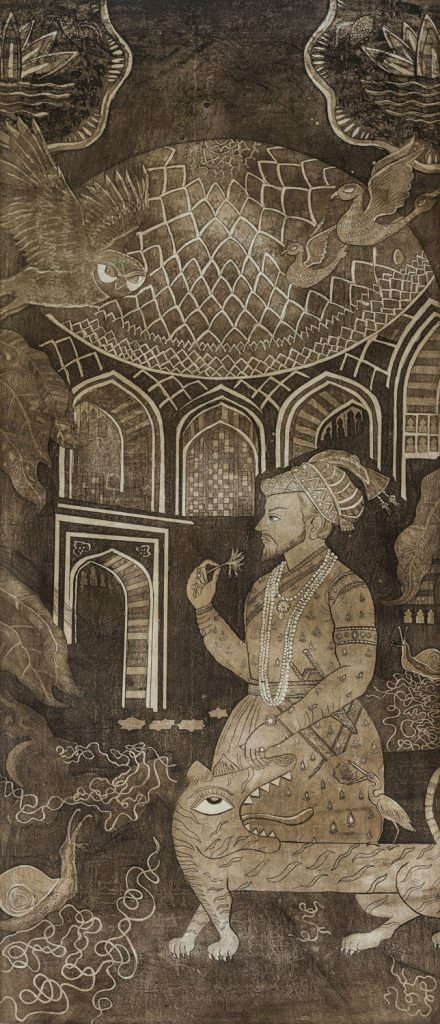
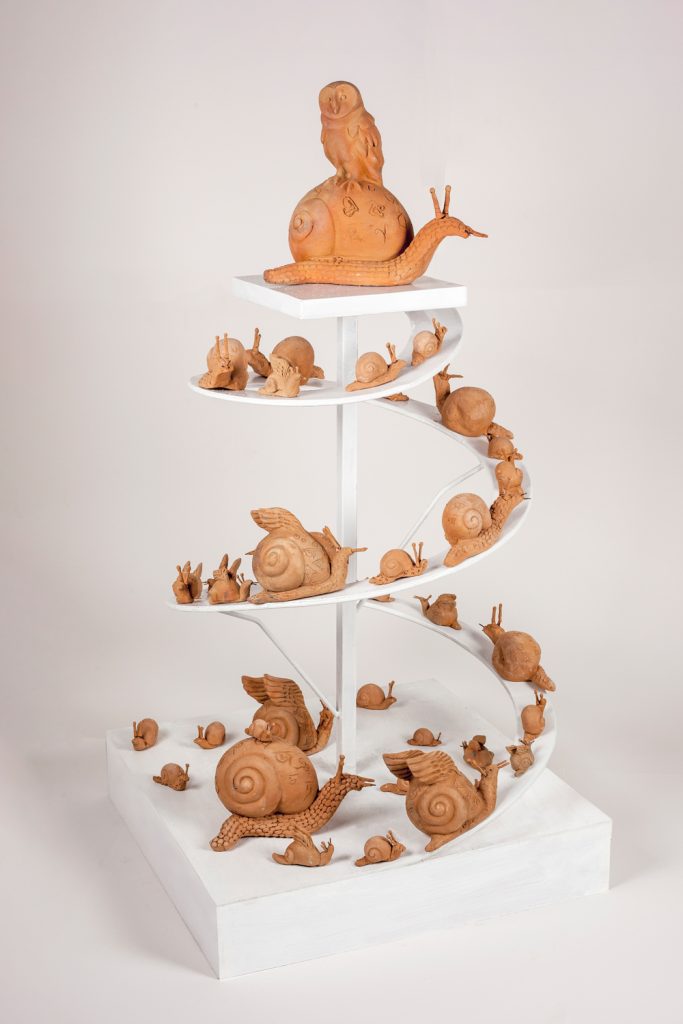
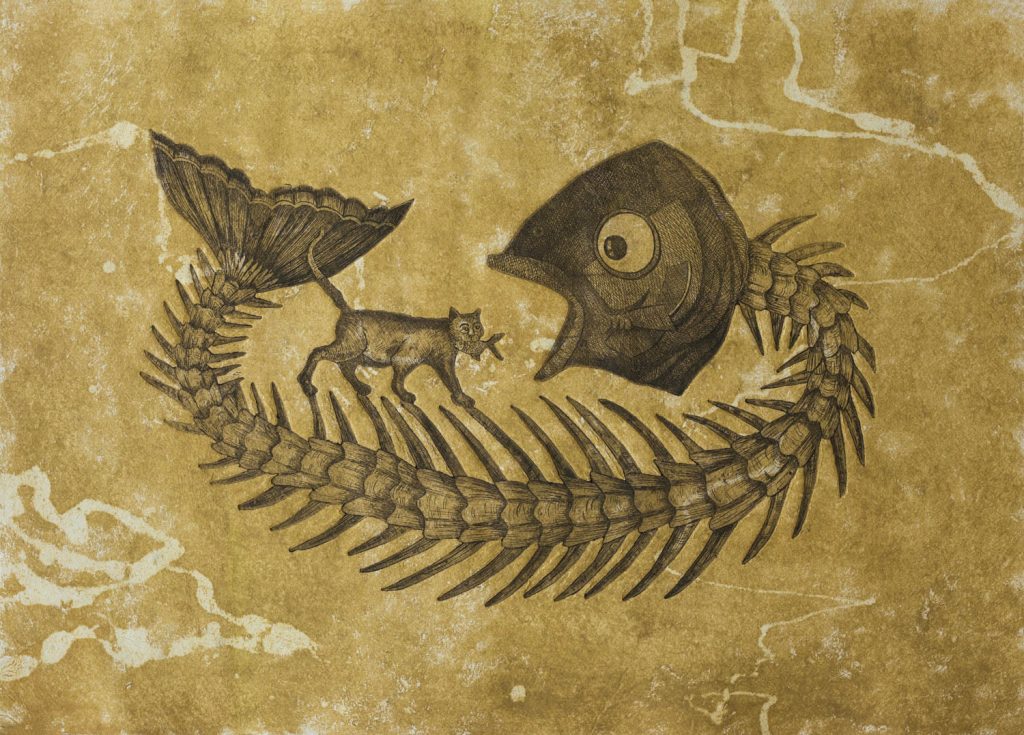
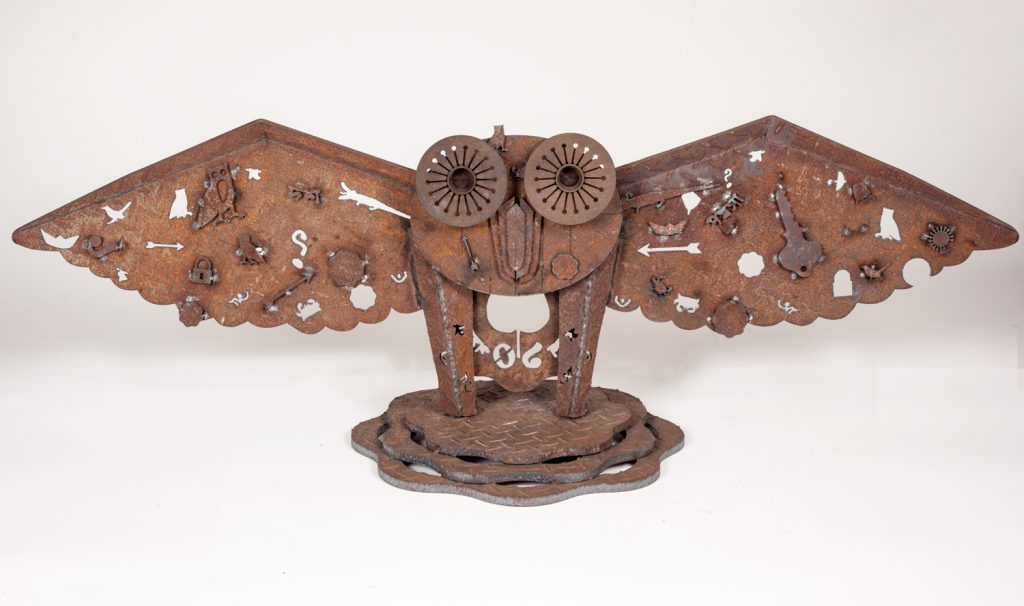
The visual artist notes his belief that “if the majority of people tried to patronize art, collect works, it would create a beautiful cultural atmosphere amongst us. I do see a change, it may be a slow process, but the change is evident.”


